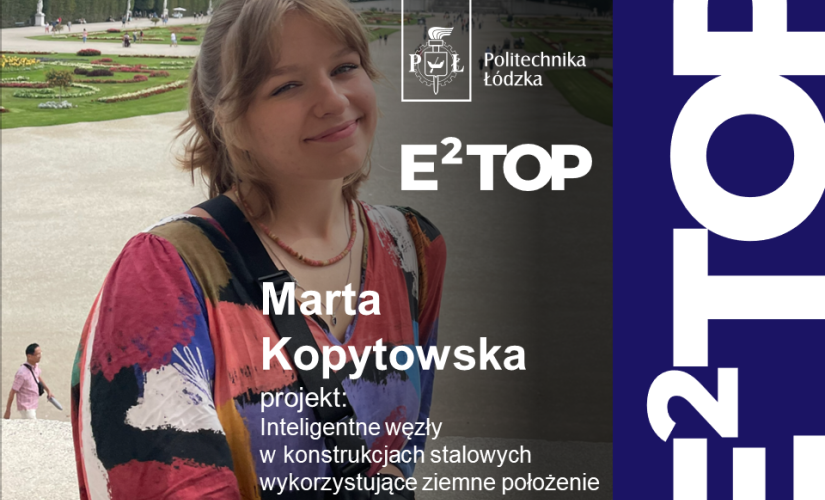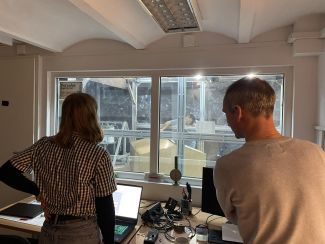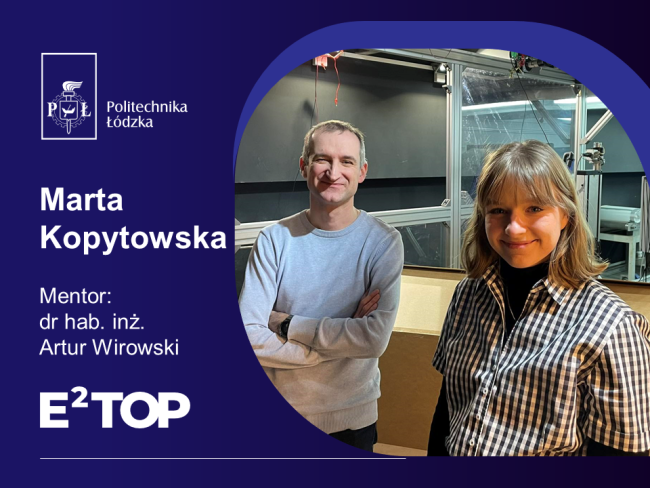What is the analogy between human anatomy and the structures you design?
In short, the variable center of rotation – in the knee joint, the femur rotates during the bending motion and then slightly moves forward. This causes the center of rotation to move beyond the knee, increasing the range of motion. My node has two different centers of rotation outside of it, which are selected depending on the load.
What do construction projects gain from this approach?
My main goal is innovation – introducing a new, non-static connection to the construction market. In the project optimization process, I also aim to reduce the cross-sections of steel elements, i.e., reducing construction costs.
Could you describe your project in the E2Top programme?
In the first edition, I managed to design a connection of steel elements with a variable center of rotation, whose location depends on the direction of the load. Using such a connection, the structure generates lower internal forces.
This year, I focused on testing this connection in practice. I managed to build a scaled model of a steel frame utilizing the variable node at the ridge, on which I conducted experiments. After the first successful tests, I built a scaled model of a steel hall, which I tested in the wind tunnel at our Faculty of Mechanical Engineering. The success of each of these experiments allows me to start more advanced research and design different node appearances.
You decided to test these solutions in practice.
Currently, I am on Erasmus in Timisoara, Romania, where I have entered into cooperation with a local professor. Thanks to this, I will be able to continue computer optimization, as well as build part of the steel hall in actual scale. This will allow for obtaining real displacements and checking the hall in terms of weather conditions. Such research will bring us closer to introducing a new idea to the market.
Under whose direction did you conduct research in the programme?
My mentor during the work is Assoc. Prof. Artur Wirowski. This year I chose him due to our pleasant cooperation in the first edition of the programme. Prof. Wirowski is very helpful and supportive. He is very engaged in the project and always willing to explain difficult and new issues to me.
What inspires you in scientific work?
In scientific work, I am most inspired by the continuous learning of new issues and ideas, as well as the possibility of creating such ideas ourselves.
Interview by: Agnieszka Garcarek-Sikorska



